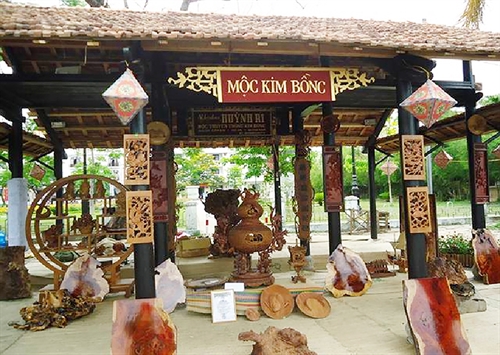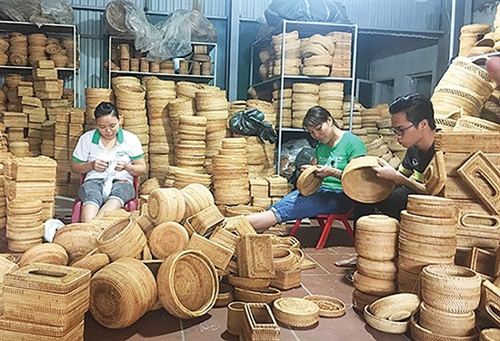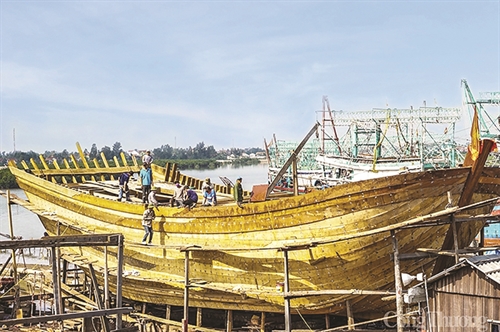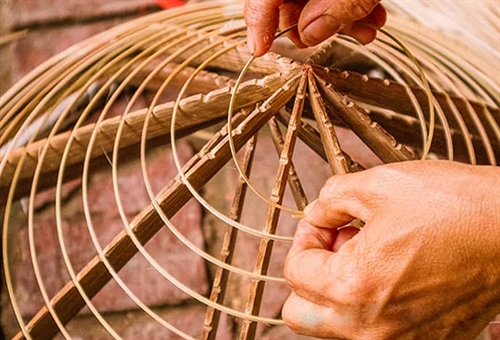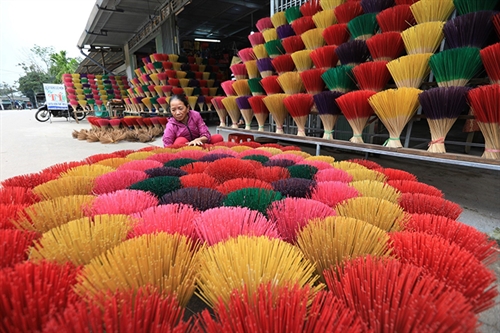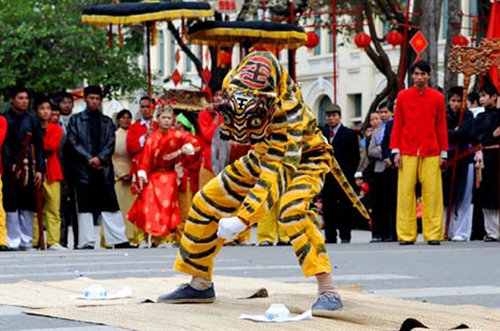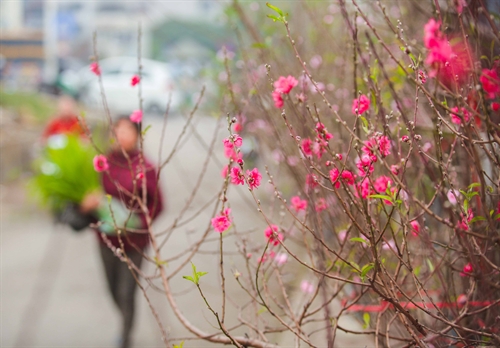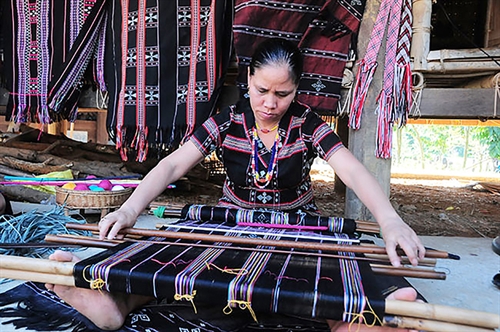Do Thi Nguyet Que
Located on the side of Truc Bach Lake in an area which is now Ngu Xa street in the west of Hanoi, traditional Ngu Xa bronze casting village is well-known for traditional monolithic hollow bronze casting and coloring methods. The bronze casting craft was once one of the four quintessential professions in the imperial capital of Thang Long (now Hanoi), alongside silk weaving craft of Yen Thai village, pottery craft of Bat Trang village, and gold handicraft jewelry of Dinh Cong village.
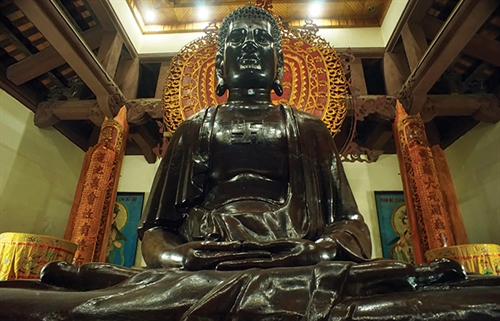 |
| The statue of Amitabha Buddha in Than Quang pagoda__Photo: https://hanoitv.vn/ |
Historical documents show that during the Le Dynasty (1428-1527), the village was formed by a number of artisans and skilled bronze workers who migrated from five communes of Dong Mai, Chau My, Long Thuong, Dao Vien and Dien Tien in Sieu Loai district (now Thuan Thanh district of Bac Ninh province) and Van Lam district of Hung Yen province. The name Ngu Xa, which meant five communes, was choosen to memorize their origin. The brozesmiths opened bronze casting workshops to make bronze coins, pots, trays, vases and worship objects such as bells, statues, incense-burners and candle holders, and later organized them into the Ngu Xa bronze casting guild.
 |
| Bronze casting which is the process of pouring molten bronze into a hollow mold to create sculptures or objects__Photo: https://hanoitv.vn/ |
From 1873-1954, the village was home to around 80 families of four clans - Nguyen, Le, Do and Tran. It had more than 20 factories with each occupying a large area and using a two-floor kiln. The upper floor was for mold-casting and the lower floor for melting alloys.
Men in the village took charge of bronze casting while women bought materials. Bronze casts were buffed, chiselled and polished by women, apprentices and children and then sold in Hang Dong street in the capital city’s Old Quarter.
Outstanding examples of the villagers’ products include the bell in the Mot Cot (one-pillar) pagoda, the monolithic black bronze Huyen Thien Tran Vu statue, which is 3.96 meters high and weighed four tons and was made in 1677, in Quan Thanh temple; the 3.95 meter-high and 12.3-ton statute of Amitabha Buddha, which was made in three years from 1949 to 1952 and recognized as the oldest bronze Buddha statue in the country, in the village’s Than Quang pagoda.
Through many ups and downs, at present, there are only two family-run bronze-casting workshops left in the village. The two workshops, one belongs to the family of the oldest bronze casting artisan Nguyen Van Ung and the other is owned by the son of the late artisan Ngo Thi Dan, are now specialized in producing traditional worship items for pagodas and temples nationwide.
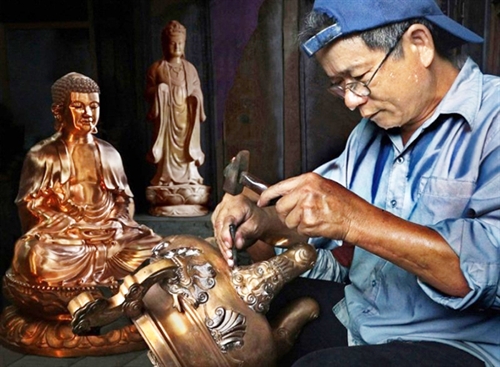 |
| An artisan is putting the final touch on his product__Photo: https://hanoitv.vn/ |
Hardships aside, bronze casting craft requires creativity, patience, carefulness, and good eyesight. Bronze casting apprentices must be familiar with different stages ranging from creating the clay model, molding, casting and polishing to coloring.
Molding is time-consuming and considered the most important step of the process that decides the product’s beauty, artisan Bui Thi Minh, who is the wife of 73-year-old artisan Ung, told the Vietnam Law and Legal Forum magazine. She went on: “In this stage, bronze workers use the mixture of clay and rice husks to shape a mold and that of clay and do or poonah paper to make its smooth inner layer. The mold is usually supported by a steel frame in case the product is a big one. After the mold is carefully dried in the sun, it will be fired in a wood-fueled kiln. A product can be destroyed by a wet or incompletely burnt mold.”
Once the single-use mold is ready to cast a new piece, bronzesmiths melt either the alloy of yellow copper, zinc and aluminium or the alloy of red copper, tin, zinc and lead over a wood-fueled kiln. Melting processes vary between alloys because each alloy has a different melting process. “When the molten alloy is poured into the mold cavity, an experienced bronzesmith can tell that his product is a 90-percent success or a failure based on the sound of the molten alloy,” said artisan Ung.
When the alloy has cooled and solidified, the craftsman breaks away the expandable mold to remove the casting. Now it’s time for him to fix serious casting flaws on the cast or chisel the cast if it is a vase or an incense burner and finally polish it.
The last step of the production process is coloring. Nowadays, despite the availability of various paints in the market, Ngu Xa bronzesmiths still apply the traditional method, using rice straws to smoke products until they turn brown, black and ancient bronze.-
